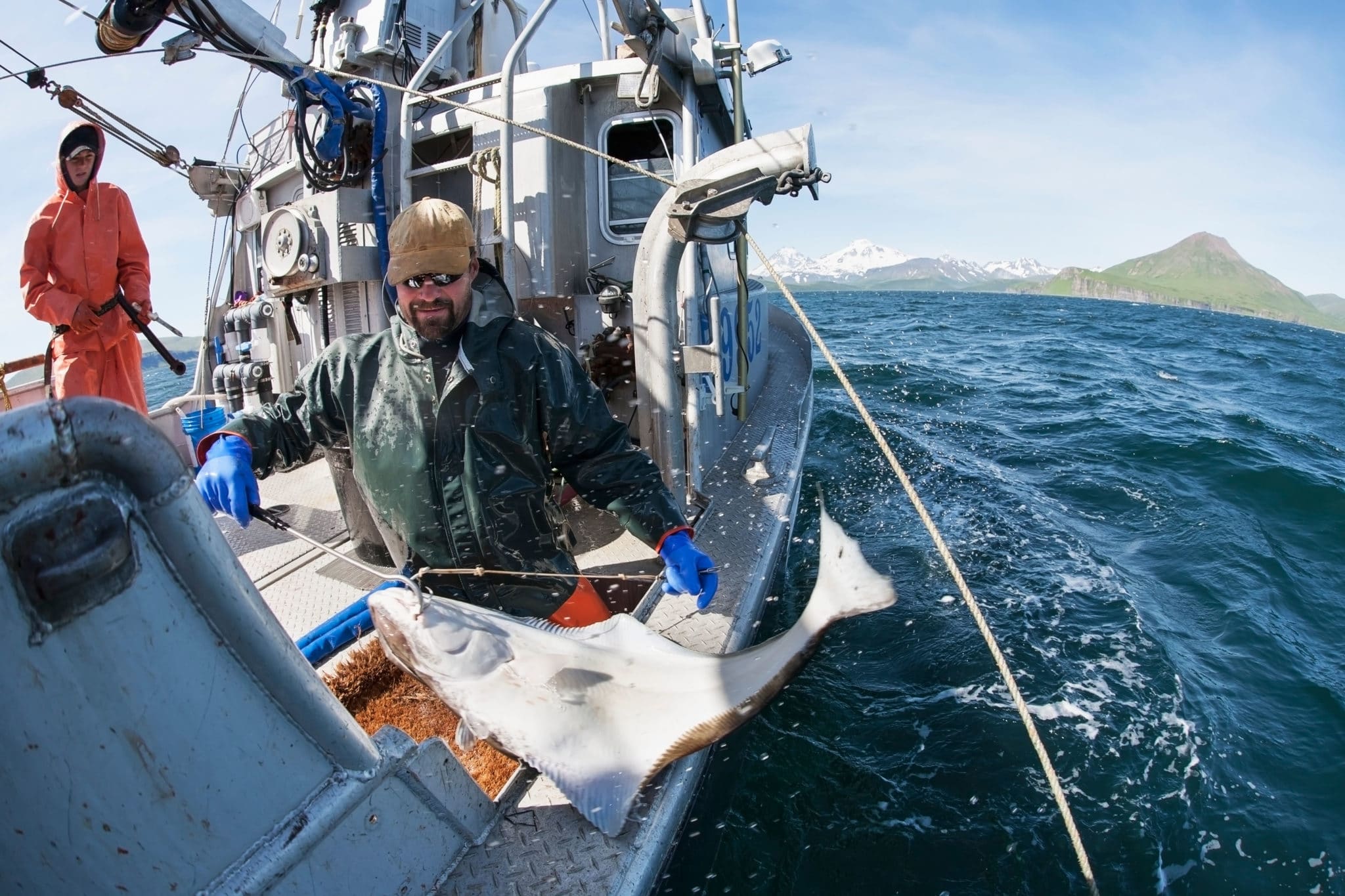 Pacific halibut are the biggest flatfish in the sea. They can weigh up to 500 – 700 pounds and can grow up to 9 feet in length. They are among the most well known North American fish. Pacific halibut are regular along the Northwest bank of the USA and Canada. Halibut lean toward rough bottoms where they trap food. Their eating regimen comprises of cod, pollock, herring, octopus, crabs, shrimp and other prey.
Pacific halibut are the biggest flatfish in the sea. They can weigh up to 500 – 700 pounds and can grow up to 9 feet in length. They are among the most well known North American fish. Pacific halibut are regular along the Northwest bank of the USA and Canada. Halibut lean toward rough bottoms where they trap food. Their eating regimen comprises of cod, pollock, herring, octopus, crabs, shrimp and other prey.
Pacific halibut is famous among fish darlings and is low in immersed fat and sodium, just as a wellspring of nutrients B6, B12, magnesium and potassium. The meat is white, mellow and flakey. It’s thickness fits an assortment of plans including barbecuing, heating and searing.
- Sole
The Pacific Northwest is home to 2 types of sole. Sole are littler flatfish that are identified with halibut. Dover sole and English sole are base tenants that feed on little fish, amphipods, molluscs, shellfish and other sea life.
Notwithstanding being looked for after by recreational fishermen, the fish are gotten economically by fishing and advertised as filet of sole. The two species make up a huge bit of the business flatfish reap in the Pacific Northwest.
- Salmon
There are six types of Pacific salmon – pal, coho, lord (chinook), pink, sockeye and steelhead – and all are wild. Salmon develop in the sea, and generate in the waterways. The fish bring forth just a single time and pass on a while later. Salmon inevitably move to the ocean, at that point come back to their surge of birth to bring forth.
Salmon is high in Omega-3 unsaturated fats which is notable as having medical advantages. Studies have demonstrated that smoked salmon has an exceptionally low degree of mercury, in contrast to some other fish.
The North Pacific Halibut Commission has chosen to save as far as possible for guided and un-guided recreational fishermen the equivalent for 2012 as they were in 2011. Those cutoff points permit fishers in Area 3C, the south focal Alaska zone to get and hold a day by day limit two halibut of any size.
Visitors that will be going to Alaska’s Kodiak Island Resort will be satisfied to realize that halibut cutoff points will be the equivalent in 2012 as years past. In different regions of Alaska the North Pacific Halibut Commission working together with the National Oceanic and Atmospheric Administration have chosen not to establish new pack limits in seaside waters around Kodiak. Lately territories in Southeast Alaska have had halibut pack limits cut down the middle, from two fish to one. In 2011 NOAA additionally further confined southeast Alaska by forcing a most extreme size restriction of 37″. This is ending up being a troublesome obstacle for hold up proprietors and contract pontoon administrators in zones around Sitka, Ketchikan and Elfin Cove Alaska.
There are loads of halibut all around Kodiak Island yet no region of Alaska offers more or better chances to get huge halibut than Larsen Bay. Our cabin, Kodiak Island Resort, is situated on the shores of Larsen Bay which is on the uninhabited, western side of Kodiak. We every day fish the secured waters of Larsen Bay, Uyak Bay and Spiridon Bay and furthermore the close to waterfront waters of the Sheilikof Straights. The Shelikof Straights is a 30 mile wide body water that isolates Kodiak Island from the Alaska terrain.

